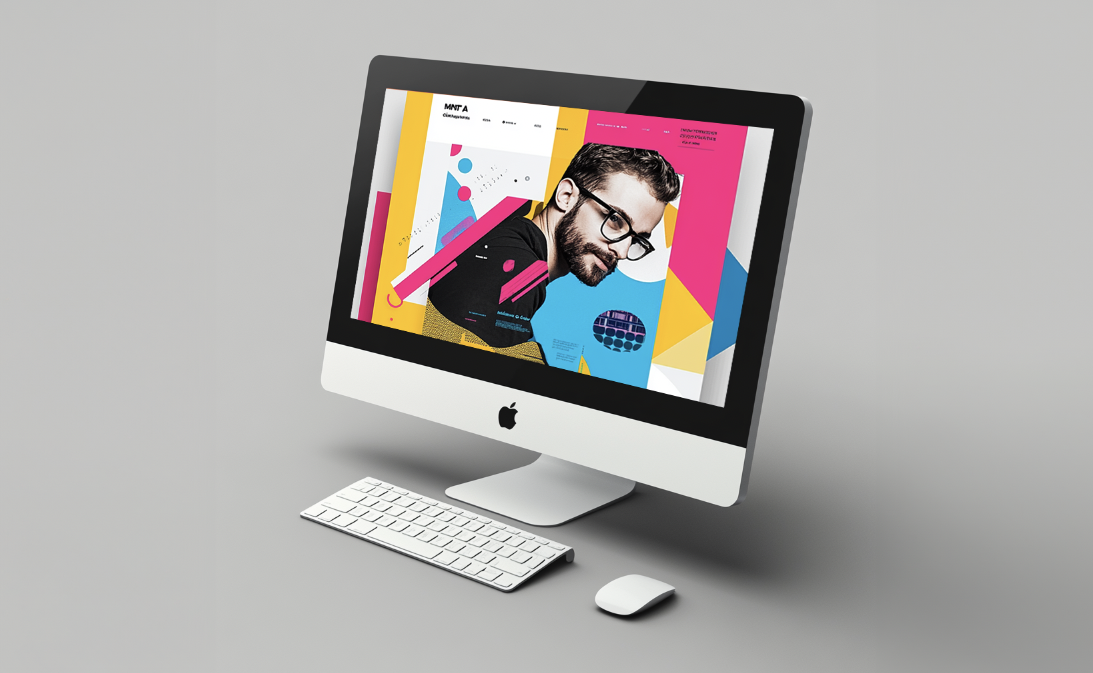Every web designer is well aware of the competitive web market. So, having a strong portfolio that showcases web design skills is non-negotiable when securing new clients. After all, without a strong portfolio, how can you prove your worth as a professional?
This article covers ten key tips every web designer should take to build a strong portfolio that will make them stand out from the crowd and help attract potential clients.
Select an Intuitive Layout
As your web designer portfolio is a collection of all the projects you’ve worked on, you must choose a clear and intuitive layout to showcase them. In particular, your portfolio layout must be consistent across different devices, so when someone opens it from a mobile phone or desktop device, there isn’t a huge difference.

Get Weekly Freelance Gigs via Email
Enter your freelancing address and we’ll send you a FREE curated list of freelance jobs in your top category every week.
This reduces the navigation hassle and creates a sense of professionalism about you and your work. Therefore, you might select a one-page layout. This way, your visitors can smoothly scroll through all your projects. But make sure not to clutter the page.
Showcase Diverse and Relevant Projects Examples
Research shows that customers spend between 10 and 15 seconds looking at portfolios. That’s not a lot of time. Therefore, you shouldn’t overwhelm your customers with all your work. Instead, make sure you show only your best work through diverse yet relevant projects.
Consider what your potential target client looks for and what their needs and preferences are. Afterward, select the most relevant projects for them and present them properly.
You should display your past projects as case studies that look like presentations rather than an unstructured mix of different projects. This will help you guide the client through the different projects and keep them engaged.
Remember that your portfolio shouldn’t consist only of your past work, but also future directions.
Optimize Your Portfolio
If you’re showcasing your portfolio through a website, note that it should load fast, be responsive, and be easy to navigate. In other words, you must optimize it for performance, usability, and SEO. On top of this, make sure that it’s accessible, compatible, and secure. These technical aspects directly impact visitor experience – slow loading drives away visitors, while poor navigation increases bounce rates.
Some of the best optimization practices include using relevant keywords, meta tags, and alt text that describe your work and niche. Also, link the portfolio to your blog, resume, and social media profiles.
Turn Your Personality into Design
Your web design portfolio needs to spark emotion among your visitors, which will help you create personal relationships with them. To achieve this, use animated effects, add remarkable illustrations, or integrate some abstract shapes to make your portfolio unique. This will not only keep the potential more engaged but also depict your web design skills.
Introduce Yourself in a Creative Way
As people hire people and not portfolios, you need to introduce yourself and make your personality stand out. Make sure to provide valuable information about you and your experience. Additionally, don’t forget to mention what areas in life interest you, what project you’re most proud of, and why. This will establish the first and most important connection with your potential clients.
The best practices for introducing yourself in a creative way include storytelling or combining your text message with some visual elements you’ve built.
Share Customer Testimonials
Building trust is important in attracting new clients. In fact, it can be the determining factor for many potential clients in choosing you over your competitors. This is because customer testimonials can be authentic social proof telling your services are legit and deliver real results.
When potential clients look for people to work with and see how others are satisfied with your services, they are more likely to believe in your skills and assume you can help them solve their problems. Additionally, having customer testimonials laid out for potential clients to see can help them think hiring you is less risky than working with a different web designer who other people haven’t worked with.
Start a Blog
Blogging is often a great way to show your expertise in the web design industry. You can share some tips or how-to guides, invite other professionals to share their opinions, or even post guest articles on other websites. As a result, both your customers and search engines will perceive you as an authoritative person who specializes in web design, boosting your web rankings and traffic.
Implement a Secure Web Host
When building a digital portfolio, you shouldn’t forget about your visitors’ sensitive information. Even if you’re not collecting sensitive user data, a secure website builds trust and professionalism. Make sure your hosting provider offers essentials like:
- SSL certificate (HTTPS)
- Regular automatic backups
- Firewall protection
- DDoS protection
- Two-factor authentication for your admin panel
These features will help you ensure that your digital portfolio is up and running, safe to navigate, and doesn’t put your potential clients at risk.

Use Encrypted Communication Methods
Encrypted communication methods block interception by a third party and protect the information you transmit. Therefore, you should choose communication methods, such as encrypted calls, SMS, messages, and file sharing, whenever talking to your potential clients.
Implement Password Managers
Using the same password to access your digital portfolio and other accounts can increase your vulnerability to online attacks. Therefore, you need to set a strong and unique password for each account. This is something that browser extensions like Firefox password managers handle.
They store all your passwords in one place and fill in your login details automatically, reducing the need to type them any time you log into your portfolio.
Craft an Impressive Web Designer Portfolio
With so many businesses going online, web designers are kept busy. But with high competition, becoming the one that clients choose over and over again isn’t as easy.
By following these ten tips, you can ensure an impressive web designer portfolio that will help you secure new clients. Remember, it’s not only about the appearance. Combining cybersecurity practices is also a must.

Keep the conversation going…
Over 10,000 of us are having daily conversations over in our free Facebook group and we’d love to see you there. Join us!

